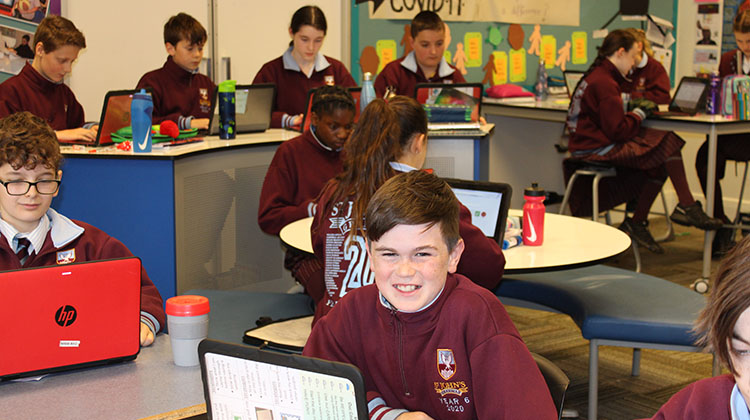Children tell stories of social awareness

More than 20,000 stories were submitted by children aged from 8 to 14 from around Australia on the topic ‘A different world – living in lockdown’ in Oxford University Press and Storyathon’s writing competition and it seems the virus has inspired a sense of community and increased social awareness.
Storyathon is the largest story-writing event in Australia and a breakdown of the 5,653,404 words received shows a surprising increase in the usage of collective nouns young people are using in their writing. The use of the word ‘we’ has skyrocketed in popularity amongst the young story writers, with a 129 per cent increase on the previous year.
Words that have appeared in submissions for the first time reveal a vocabulary driven by current affairs, including quarantine, isolation, pandemic and restrictions.
Anne Bayetto, a literacy expert at Flinders University, analysed the Storyathon submissions and said they provide an interesting insight into the way children have experienced COVID-19.
“Analysis of the stories showed children appear to be more connected with the broader community in which they live during COVID-19. There were many references to the amount of troubling news stories being overheard and a lot of descriptions of stress and anxiety that came through in the narratives. Some writers wrote about the worry they had for their parents who were frontline workers and they were seeing less of than usual,” Bayetto said.
“But on the positive side, a number of comments were made about the pleasure of spending more quality time with family. And many were aware of the environmental benefits of the lockdown, stating that the world is healthier, cleaner and flourishing.”
The trend towards togetherness can be seen in the increased prevalence of many other words including ‘people’ (283 per cent increase), 'friends' (572 per cent increase), 'world' (346 per cent increase), 'family' (327 per cent increase) and 'everyone' (183 per cent increase).
Unsurprisingly, the word ‘lockdown’ increased 190,100 per cent, having featured only once across the entirety of submissions for last year’s Storyathon.
Lee Walker, Director of Publishing and Editorial at Oxford University Press said the way children describe COVID-19 itself pointed to an impressive level of comprehension and vocabulary acquisition.
“The virus is referred to as ‘cold’, ‘dark’ and ‘lurking’, which shows the way that news media and conversations with adults are perceived through a child’s lens. The comprehension of these terms gives us a glimpse into the development of the English language too when you consider the word ‘virus’ is borrowed from the Latin word vīrus meaning ‘poison, slime and venom’, words which mirror those chosen by the children” Ms Walker said.
Other recurring topics found in the stories included dystopian futures, children wanting to be back at school and seeing friends and playing sport.
“The stories collected as part of Storyathon are being used to build the first Australian Children’s language corpus, which is a collection of texts which records the development of children’s linguistics over time,” Ms Walker said.
Storyathon began in 2019, and is currently in its second year. Submissionsare currently closed, but will reopen in School Term 3 with the theme of ‘Australia’.
For more information about the Storyathon in partnership with Oxford University Press visit the website at https://www.oup.com.au/storyathon.